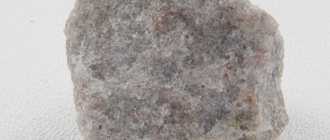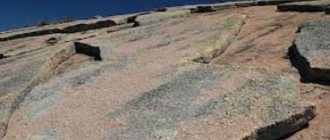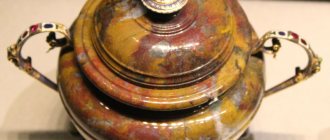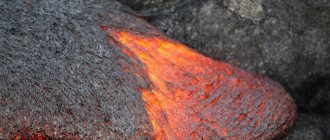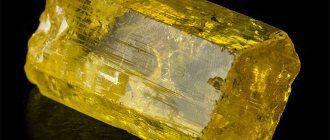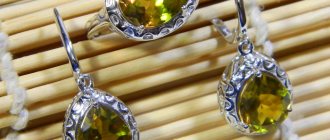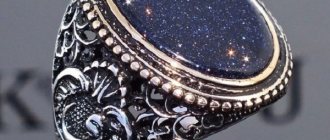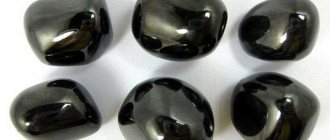Story
Natural green amber is one of the most beautiful and exotic in its family. However, its share in the total volume of raw material production does not exceed two percent, which makes the mineral inaccessible to most people.
Scientists and technologists solved the problem by creating an artificial analogue.
Russian specialists started doing this half a century ago and identified the Kaliningrad Amber Factory as the “deposit”:
- The first product was burnite. It was obtained by fusing amber chips, polyester resins and dyes.
- After a couple of decades, an improved version appeared. It went down in history as Buranite (the name almost copies Bernite).
- The consumer properties of buranite exceed those of the “parent”. And there are no shortcomings that indicate resin origin.
- It also contains amber chips (up to 5%), polyester resins and dyes. However, the exact recipe and subtleties of technology are a trade secret.
It is only known that micro-explosion technology is used to create the fractures inherent in natural amber.
At first, Buranite was positioned as artificial amber, but it sold poorly. Therefore, marketers came up with an attractive name.
Description and appearance of the stone
Green amber, or buranite, is a stone of artificial origin. The mineral can be green (most often) or red, yellow, blue. Synthesized from the resins of coniferous trees. The composition also contains 5% resin (the main component of amber).
Previously it was called artificial amber, but to attract the interest of buyers, the stone was renamed Buranite.
Features of Buranite:
- the green mineral is similar to emerald;
- its shine resembles a precious cut stone;
- does not become cloudy;
- on the Mohs scale, it is 3 points harder than amber;
- does not fade.
The gem was first synthesized in laboratories in the Kaliningrad region.
Bernite is sometimes called a synonym for buranite. These are different artificial gems, but both imitate amber. The first mineral was created earlier and retained all the disadvantages of natural resin.
See the review of the stone:
What does the stone look like?
Description of a typical Buranite is akin to a gemstone:
- Transparent
- It's quite shiny.
- There are no impurities or inclusions.
Depending on the color, Buranite looks like an emerald, ruby or sapphire.
To give it a resemblance to elite green or blue natural amber, the mineral is provided with “cracks”, intricate patterns in the thickness, and slightly cloudy.
Buranite
Today, Buranite is actively offered to the modern buyer as green amber. In fact, it is just artificially created “fused” amber. It consists of various resins with a five percent content of amber itself. Thanks to the latest technologies, Buranite really looks very bright and elegant.
The stone appeared in the homeland of real amber - in the Kaliningrad region. Unlike natural gems, buranite does not lose its rich color over time and lasts much longer. Do not assume that green amber does not exist in nature. Researchers come across such a stone, but quite rarely. It looks like ordinary amber, with frozen samples of green plants. If we compare natural green stone and artificially created buranite, then the real mineral will be much dimmer. It is very difficult to talk about any magical or healing properties of the Buranite material, because you should remember the nature of its origin. But in any case, it will add grace and charm to your image and will become a wonderful part of your jewelry collection.
Where is it used?
The cheap, easy-to-process mineral has found application among jewelers and decorators:
- Jewelers create sets of jewelry with inserts of any size and configuration. Basically these are earrings plus a ring plus a pendant. White or grayish metal is suitable as a frame: nickel silver, cupronickel, silver, jewelry alloy.
- Decorators cut small plastic, inlay household items, furniture, and panels.
Jewelry made from buranite
Collectors use buranite as an exhibit of the department of technological achievements.
How to distinguish
Not all manufacturers indicate the origin of the product, so for connoisseurs of natural stones the relevant question is how to distinguish imitation from amber.
The properties of buranite help to do this:
- It is very bright and shiny. Amber does not look like this even after polishing.
- When rubbed against wool, it does not become electrified and does not attract hair, threads, or paper.
- It is heavier and difficult to scratch.
Imitation can be distinguished by color. Buranite is homogeneously saturated. And the Baltic mineral is grayish-green. The raw materials mined in the Dominican Republic are blue-green. Lush green natural stones are not offered for sale.
Magical and healing properties of buranite
As for the magical properties of buranite, it is difficult to answer this question unambiguously. Naturally, it will not have such powerful energy as natural stones. Buranite did not lie in the ground for millions of years, saturated with the energy of nature. Therefore, it is quite difficult to talk about any effect on the human body.
But at the same time, it is quite capable of accumulating a fairly large charge, because natural materials are used to create it. Therefore, Buranite can be used in various spiritual practices. And the result obtained will depend entirely on the practitioner.
You should also not expect any therapeutic effect from Buranite. Despite the fact that the stone contains natural resins, including amber in small quantities, lithotherapists do not use it to treat diseases and improve well-being. The only property that has been noted for buranite is the ability to have a beneficial effect on the psycho-emotional state of a person due to the green color of the stone.
How to care
Buranite is stronger than amber and easier to care for:
- Store separately from other products.
- Remove dirt with warm water (you can use soft dish gel) and a soft cloth or brush.
- Then wipe dry to avoid water stains.
- Soda, vinegar, strong household chemicals, and abrasives are prohibited.
- Make sure that the frame cleaner does not come into contact with the insert.
Jewelry is removed when going to the sauna, swimming pool, gym, or the beach.
How to spot a fake at home
Within the walls of the store they will not be allowed to apply the method of destructive testing to the product, but at home you can try some actions. The simplest and most accessible methods for detecting counterfeiting are:
- try to scratch the product with a knife;
- place the sample in salt water;
- electrification;
- melting;
- using chemical reagents;
- exposure to ultraviolet radiation.
An attempt to scratch a natural sample with a knife should result in a scratch on the surface, along the edges of which small fragments will appear. The plastic product will have solid shavings.
Fragments of real amber will float in salt water, and sink in fresh water. This is due to the physical properties of the stone, the density value is 1.05 g/cm3, while the salt solution has a density of 1.19 g/cm3. To prepare the solution you will need 10 teaspoons of salt and 250 g of water.
As a result of the test, samples made of glass, fresh resin and bernite will sink, while pressed amber (ambroid) and copal will float on the surface of the water.
A simple way to check is related to the property of electrification.
If you rub an amber product on wool and immediately apply a sheet of paper to it, the paper will magnetize it to it.
If you rub amber intensively between your palms or on textiles, it will heat up and begin to emit the aroma of pine or turpentine. Artificial fragments will begin to smell unpleasantly of chemicals.
An identical effect is observed if you touch the surface of amber with a hot needle. A rosin aroma and thick white smoke will appear. If it is fake, there will be a distinct smell of chemicals.
The natural material is resistant to short-term exposure to alcohol or solvent. The plastic imitation will begin to deteriorate. A copal product deteriorates from the influence of any reagent. Ether rubbing makes the surface of pressed amber sticky.
Under an ultraviolet lamp, real amber exhibits the property of luminescence. A clear sample will produce a blue glow, while a smoky stone will produce a pale blue glow.
Fresh resin samples will experience slight deformation when pressed firmly with your fingers.
Since ancient times, amber has been used by humans in everyday life, in crafts, and in the creation of jewelry. People sincerely believed that amber was fossilized honey or frozen mountain oil. Amber fragments have been formed over centuries, accumulating energy and the power of nature. In order not to be deceived and to have a real powerful gem in your hands, it is important to be able to distinguish it from fakes and imitations.
Magical and healing properties
Buranite has no healing effects or magical properties. The reason is clear: amber takes millions of years to form, absorbing the energy of nature. Buranite is created in a couple of hours, the amber crumb is only 5% (sometimes 0%).
For the same reason, astrologers do not attach importance to the mineral.
Artificial origin is not always a minus: jewelry with buranite will suit everyone, regardless of their zodiac sign, lifestyle or character traits.
Color therapists say: magic is created by the color green. It strengthens vision and gives rest to the eyes. A bright stone improves your mood. And this is the key to mental balance and physical health.
Magic properties
It is difficult to provide a specific answer about the magic of this mineral, since it is considered artificial and its crystals are produced industrially. For this reason, the stone should not have magical properties, and jewelry with its inclusions has no contraindications and anyone can wear it. However, in the manufacture of buranite, natural resin is used, so it is able to accumulate energy reserves, which is why the crystal can be used in ceremonial and ritual actions.
